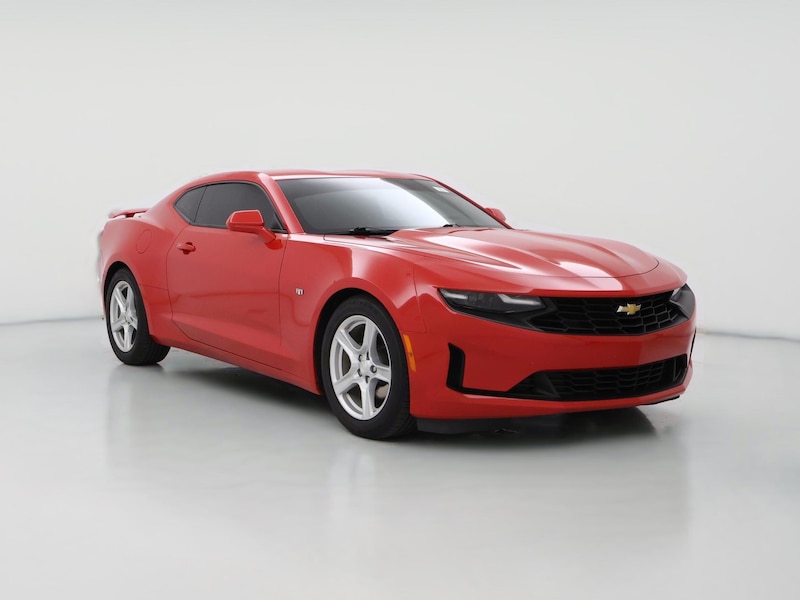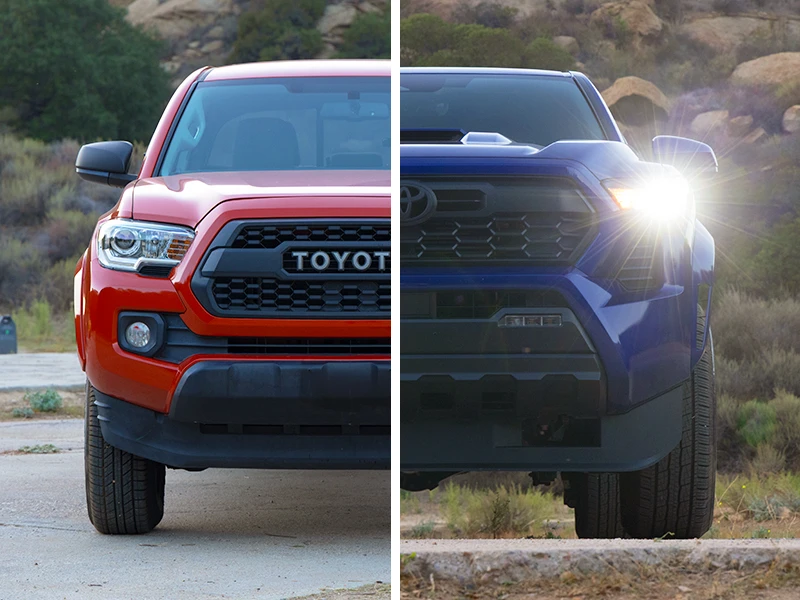Speed, style, and a slice of history.
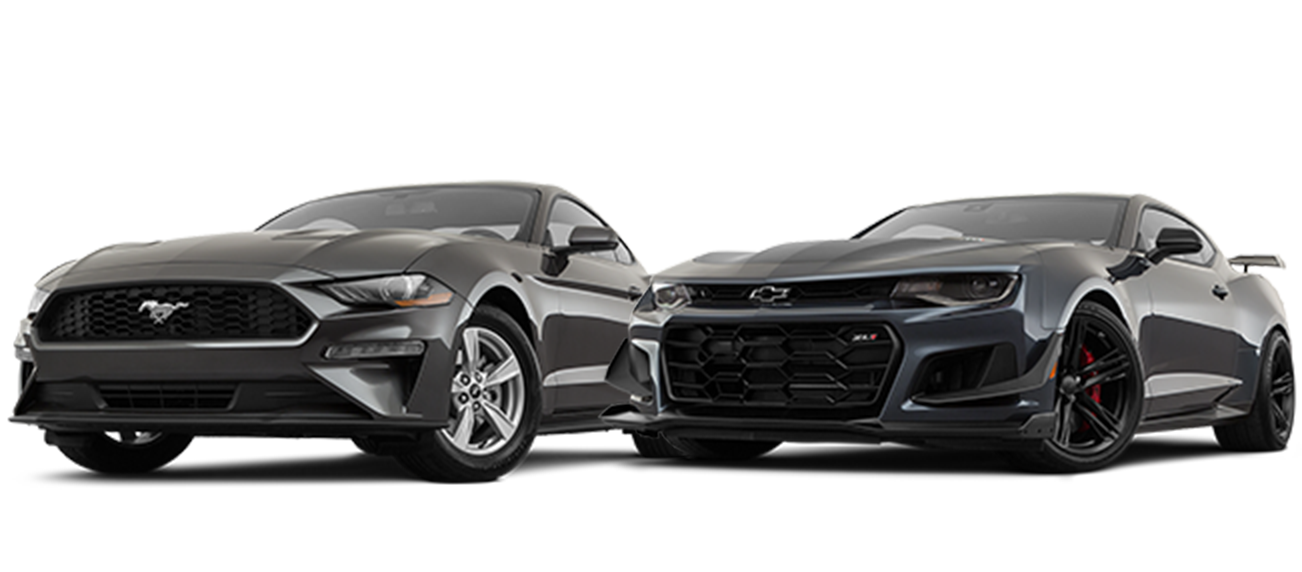
When the Ford Mustang came out in 1964, it defined the sports car class. Chevy answered with the Camaro in 1966, and since then these two standouts have been racing each other to offer drivers the latest in speed and power. The most recent generation of the Camaro launched in 2016, whereas the Mustang was last redesigned in 2015. Both modern iterations offer a host of engine and trim options, perfect for enthusiasts who don't mind that these cars only seat four.
Take a look at how the Ford Mustang stacks against other muscle cars:
Chevrolet Camaro vs. Ford Mustang: What to Know When Buying Used
Ask the Expert: Challenger or Charger―Which Is the Dodge Muscle Car for You?
Here's what you should know when deciding between the Ford Mustang vs. the Chevrolet Camaro.
Side-by-Side Comparison

2020 Ford Mustang | 2020 Chevrolet Camaro | |
|---|---|---|
Average Price | $31,000 | $30,000 |
Performance | ||
Base Engine | 2.3L EcoBoost® I-4 | 2L turbo four-cylinder engine |
Horsepower | 310 hp | 275 hp |
MPG | 25 mpg combined | 25 mpg combined |
Interior | ||
Seating | 4 | 4 |
Cargo Space | 13.5 cu ft | 9.1 cu ft |
Front-seat Legroom | 45.1 inches | 43.9 inches |
Rear-seat Legroom | 29 inches | 29.9 inches |
Overall Interior Space | 82.8 cu ft | 93 cu ft |
Ratings | ||
Tailpipe Emissions | 354 grams per mile | 353 grams per mile |
NHTSA Safety Rating | 5/5 overall | 4/5 overall |
Certain vehicles may have unrepaired safety recalls. Click here to look up a specific vehicle.
Features and Trim Options
The Ford Mustang and the Chevrolet Camaro are both built for fun, and both offer hard-top and soft-top convertible options. The Mustang and the Camaro stand out for their engine options, while the trims range from basic to extraordinary. In the base trims, you'll find cloth seats and basic audio systems; higher trims have leather seats and premium audio with smartphone connectivity.
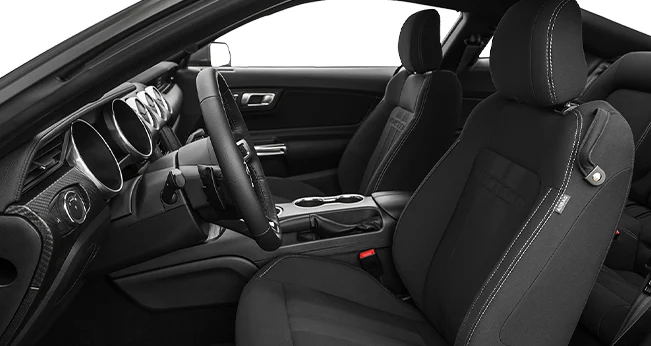
The 2018-present Mustang comes in four main trims: EcoBoost®, EcoBoost Premium, GT, and GT Premium. If you want maximum performance, you can also shop for the two track-tuned Shelby trims. All 2018–2020 Ford Mustangs have:

Remote keyless entry system
Electronic stability control
Launch control (manual transmissions only)
Steering wheel mounted cruise control and audio controls

The 2018–present Camaro is available in six trim levels: 1LS, 1LT, 2LT, 1SS, 2SS, and ZL1, the performance package. The base Camaro offers more standard features than the base Mustang. All 2018–2020 Chevrolet Camaros have:

Seven-inch touch-screen display
Apple CarPlay™ and Android Auto™
Keyless entry and start
Rearview camera
Engine Options
If you're considering a Mustang or Camaro, a powerful engine is probably your priority. Both cars offer a range of engine options, all of which deliver powerful acceleration. Here are the engine options for each:
Ford Mustang
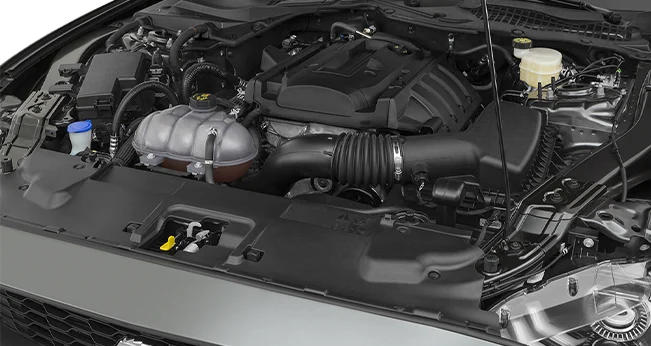
300-hp 3.7L V6: This is the base engine for model years 2016–2017, but it was discontinued after that year.
310-hp 2.3L EcoBoost® I-4: An available option on model years 2016–2017, this became the standard engine for model years 2018–2020 on the EcoBoost and EcoBoost Premium trims.
5L V8: The standard engine for the GT trims produces 435 hp on model years 2016–2017, and 460 hp on model years 2018–2020.
5.2L V8: The standard engine for the Shelby trims produce 526 hp on model years 2016–2020 (not available for the 2019 model year)
760-hp 5.2L Supercharged V8: This engine was introduced in 2020 for the GT500 and Shelby500 trims.
Chevrolet Camaro

275-hp 2L turbo four-cylinder: This is the base engine for model years 2016–2020, found on the 1LS and 1LT trims.
335-hp 3.6L V6: This is an available option for the LT and 1LE trims.
455-hp 6.2L V8: Available on the LT1, SS, and 1LE trims.
650-hp supercharged 6.2L V8: Available on the ZL1 trim, on model years 2017 and later.
Fuel Economy
The Ford Mustang and Chevrolet Camaro have comparable fuel economy, which varies widely based on the engine you choose. Here's an overview, using 2019 models.
Ford Mustang
The 2019 Ford Mustang with the base 310-hp 2.3L EcoBoost® I-4 gets an EPA-estimated combined fuel economy of 25 mpg.1
The 2019 Ford Mustang with the 460-hp 5L V8 gets an EPA-estimated combined fuel economy of 19 mpg with automatic transmission and an EPA-estimated combined fuel economy of 18 mpg with manual transmission.1
The 2019 Chevrolet Camaro with the base 275-hp 2L turbo four-cylinder engine gets an EPA-estimated combined fuel economy of 25 mpg with automatic transmission and an EPA-estimated combined fuel economy of 22 mpg with manual transmission.1
Chevrolet Camaro
The 2019 Chevrolet Camaro with the 335-horsepower 3.6L V6 engine gets an EPA-estimated combined fuel economy of 22 mpg with automatic transmission and an EPA-estimated combined fuel economy of 20 mpg with manual transmission.1
The 2019 Chevrolet Camaro with the 455-horsepower 6.2L V8 engine gets an EPA-estimated combined fuel economy of 20 mpg with automatic transmission and an EPA-estimated combined fuel economy of 19 mpg with manual transmission.1
The 2019 Chevrolet Camaro with the supercharged 6.2L V8 engine gets an EPA-estimated combined fuel economy of 16 mpg with both automatic and manual transmission.1
Tech Features
The Chevrolet Camaro comes with more standard tech features than the Ford Mustang. Here's what you'll find on the base trims of each in model years 2016–2020:
Ford Mustang

4.2-inch color LCD screen
Two USB ports
Rearview camera
SYNC® Voice Recognition Communications and Entertainment System
Chevrolet Camaro
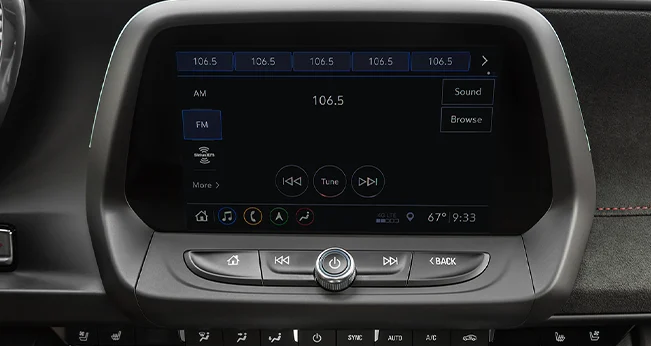
Seven-inch touch-screen display
Apple CarPlay® and Android Auto™ integration
Available parental speed controls
Two USB ports
Cargo Space
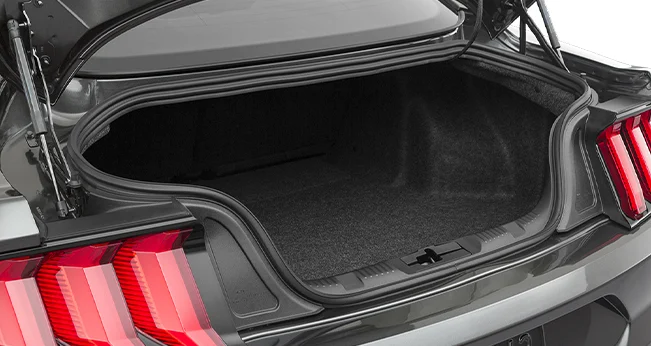
If cargo space is a priority for you, the Mustang stands out. The Mustang has 13.5 cu ft of trunk space in the coupe version on model years 2016–2020, while the convertible has 11.4 cu ft. The Camaro has just 9.1 cu ft of trunk space from 2016 onward.

Pricing
The Ford Mustang has more powerful engine options than the Chevy Camaro, but the Camaro offers more standard features, even on base trims. Here's how their pricing compares, based on CarMax sales data between November 1, 2019, and April 1, 2021.2
Ford Mustang
2016: Average price less than $23,0002
2017: Average price less than $24,5002
2018: Average price less than $26,5002
2019: Average price less than $28,5002
2020: Average price less than $31,0002
Chevrolet Camaro
2016: Average price less than $26,0002
2017: Average price less than $26,5002
2018: Average price less than $28,0002
2019: Average price less than $30,0002
2020: Average price less than $30,0002
Safety Ratings
Both the 2020 Ford Mustang Coupe and the 2020 Chevrolet Camaro Coupe received an overall 5/5 by the National Highway Traffic Safety Administration (NHTSA). Certain vehicles may have unrepaired safety recalls. Click here to look up a specific vehicle.
Overall, the 2020 Mustang scored slightly better on various crash test ratings. Here are the details:
Ford Mustang
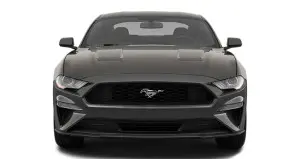
Frontal Barrier Crash Rating Test: A head-on collision between two similar vehicles traveling at 35 mph.
Overall: 5/5
Side Barrier Crash Rating Test: A vehicle standing in an intersection sustains driver-side impact from a vehicle moving at 38.5 mph.
Overall: 5/5
Side Pole Crash Rating Test: A vehicle slides sideways at 20 mph and impacts a tree or telephone pole.
Overall: 5/5
Chevrolet Camaro

Frontal Barrier Crash Rating Test: A head-on collision between two similar vehicles traveling at 35 mph.
Overall: 4/5
Side Barrier Crash Rating Test: A vehicle standing in an intersection sustains driver-side impact from a vehicle moving at 38.5 mph.
Overall: 5/5
Side Pole Crash Rating Test: A vehicle slides sideways at 20 mph and impacts a tree or telephone pole.
Overall: 5/5
Reliability
RepairPal gave the Ford Mustang and the Chevrolet Camaro an overall reliability rating of 3.5 out of 5 stars, which RepairPal describes as above average. Here's how the reliability of these two vehicles compares:
Ford Mustang
Cost: RepairPal reports that the average total annual cost for repairs and maintenance on a Ford Mustang is $709, compared to an average of $526 for midsized cars and $652 for all the vehicles RepairPal considered in its dataset.
Frequency: According to RepairPal, Ford Mustang owners bring their vehicles into a repair shop for unscheduled repairs an average of 0.2 times per year, compared to an average of 0.3 times for midsized cars and 0.4 times for all the vehicle models RepairPal considered in its dataset.
Severity: RepairPal reported that the probability of a repair being a severe or major issue is 14% for the Ford Mustang, compared to an average of 12% for midsized cars and 12% for all the vehicles RepairPal considered in its dataset.
Chevrolet Camaro
Cost: RepairPal reports that the average total annual cost for repairs and maintenance on a Chevrolet Camaro is $585, compared to an average of $526 for midsized cars and $652 for all the vehicles RepairPal considered in its dataset.
Frequency: According to RepairPal, Chevrolet Camaro owners bring their vehicles into a repair shop for unscheduled repairs an average of 0.2 times per year, compared to an average of 0.3 times for midsized cars and 0.4 times for all the vehicle models RepairPal considered in its dataset.
Severity: RepairPal reported that the probability of a repair being a severe or major issue is 17% for the Chevrolet Camaro, compared to an average of 12% for midsized cars and 12% for all the vehicles RepairPal considered in its dataset.
RepairPal Reliability Ratings are based on the actual cost, frequency, and severity of unscheduled repairs and maintenance on make/model data for select 2010–2019 vehicles. The reliability of a specific vehicle may vary depending on its maintenance and driving history, model year, trim, and features.
*RepairPal Reliability Ratings are provided by RepairPal and CarMax is not responsible for their accuracy. These ratings are based on RepairPal Reliability data as of 12/31/2018. Learn more.
Performance
Both the Ford Mustang and the Chevrolet Camaro are built for speed. The optional supercharged V8 engine is available on both, although you'll get the most horsepower out of the Mustang Shelby. Both cars offer a host of performance trims and track-tuning options. Here's how their zero to 60 times compare (all according to the respective manufacturer, when new):
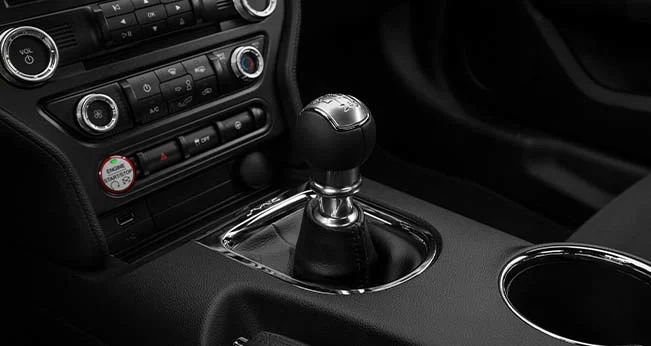
2017 Ford Mustang coupe with manual transmission:
310-hp 2.3L EcoBoost® I-4: 5.5 seconds
5L V8: 4.4 seconds
5.2L V8: 4.3 seconds
760-hp 5.2L Supercharged V8 (2020 model year): 3.7 seconds

2017 Chevrolet Camaro coupe with manual transmission:
275-hp 2L turbo four-cylinder: 5.5 seconds
335-hp 3.6L V6: 5.2 seconds
455-hp 6.2L V8: 4.3 seconds
650-hp supercharged 6.2L V8: 3.7 seconds
Emissions
According to EPA estimates, the Ford Mustang and the Chevrolet Camaro have comparable tailpipe greenhouse gas emissions. The tailpipe greenhouse gas emissions estimates for each engine option on the 2020 models are compared below. These estimates are based on a brand-new model. Visit fueleconomy.gov for more details.
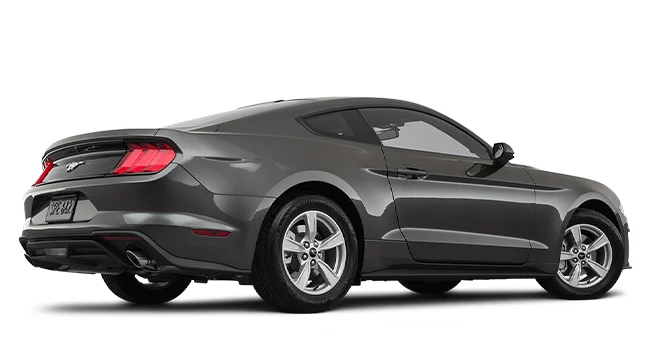
2020 Ford Mustang coupe:
310-hp 2.3L EcoBoost® I-4 with automatic transmission: 354 grams per mile
5L V8 with automatic transmission: 472 grams per mile
5.2L V8 with manual transmission: 550 grams per mile
760-hp 5.2L Supercharged V8 with manual transmission: 631 grams per mile

2020 Chevrolet Camaro coupe:
275-hp 2L turbo four-cylinder engine with automatic transmission: 353 grams per mile
335-hp 3.6L V6 with automatic transmission: 397 grams per mile
455-hp 6.2L V8 with automatic transmission: 451 grams per mile
650-horsepower supercharged 6.2L V8 with automatic transmission: 571 grams per mile
The Bottom Line
The Ford Mustang and the Chevrolet Camaro are both performance cars that offer many different engine options and packages to help you find the sports car of your dreams. The Mustang stands out for cargo space and offers slightly more horsepower, while the Camaro comes with more standard tech features, like a larger display screen and smartphone connectivity.
There are a lot more expert reviews you might be interested in, like the Chevrolet Bolt vs. Nissan Leaf.
Want to learn more? Check out these related resources:

